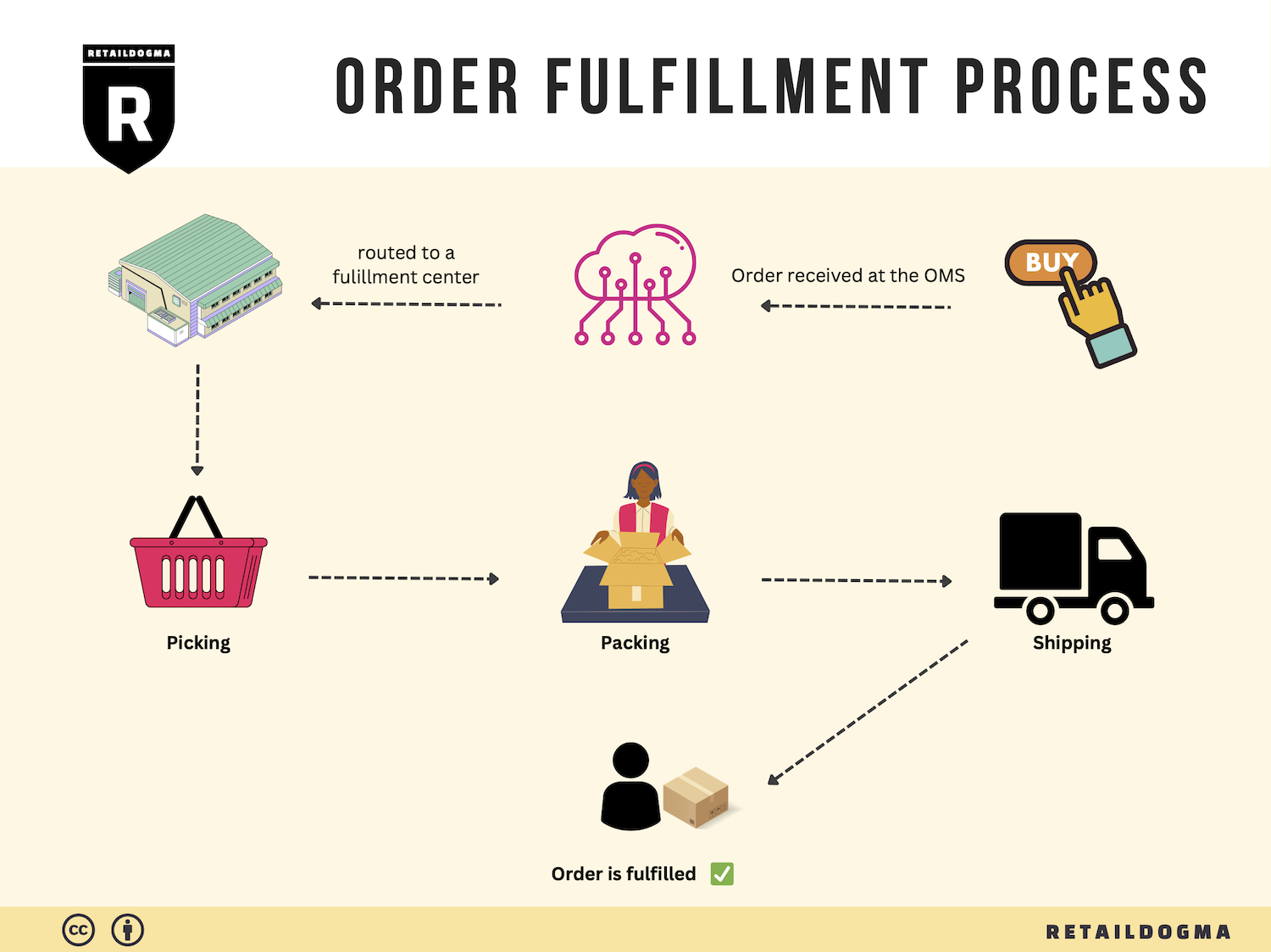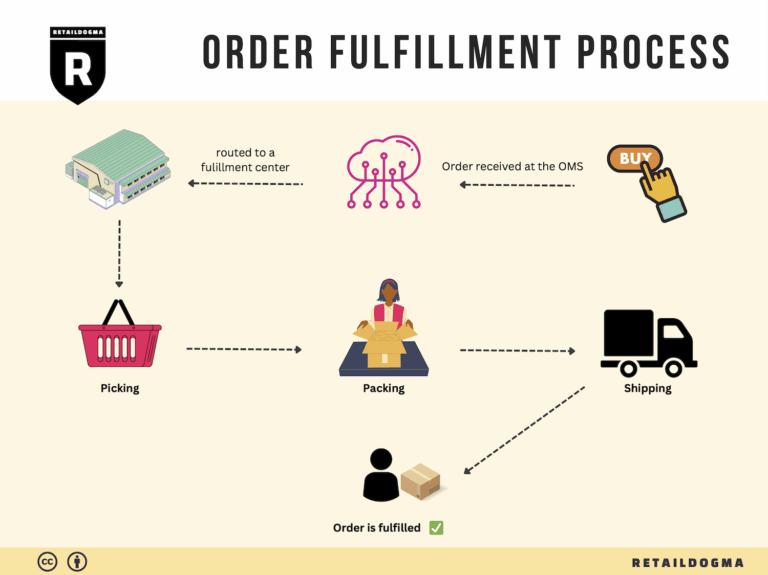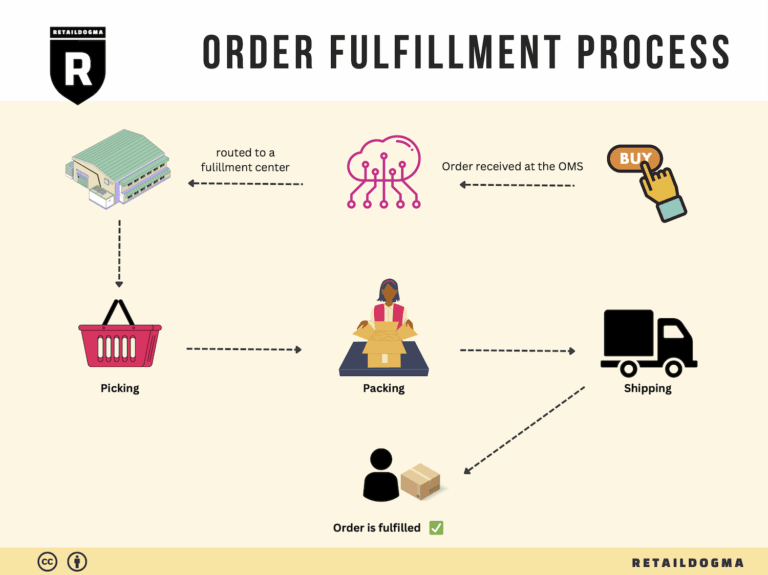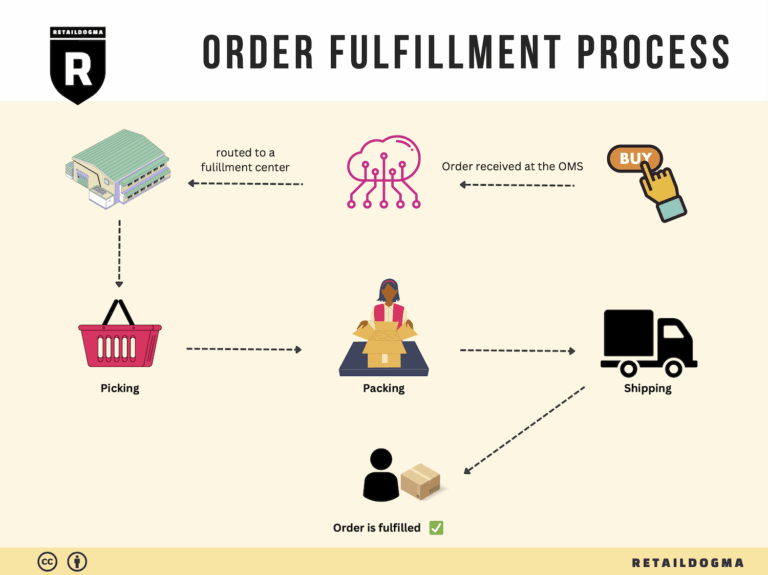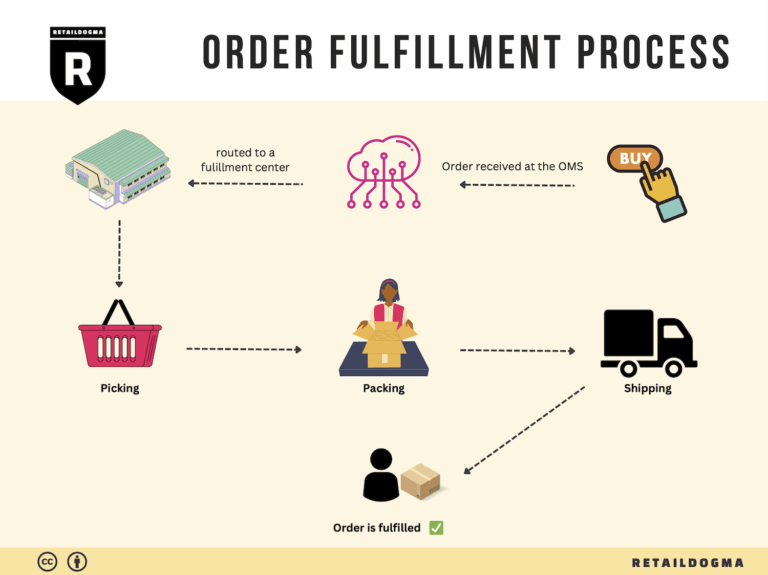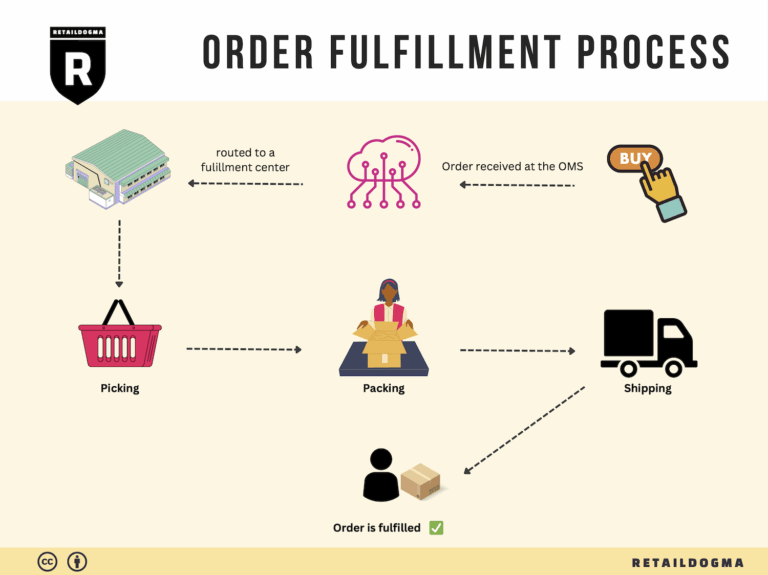How Order Fulfillment Works: A Step-by-Step Guide for Businesses
What is E-commerce Fulfillment? An Introduction for Growing Businesses
Understanding E-commerce Fulfillment
As an e-commerce business owner, you might find yourself grappling with a common challenge: the overwhelming task of packing and shipping orders. After investing time and resources into creating a great product and attracting customers, the last thing you want is to be bogged down by the logistics of getting your items into their hands. This is where fulfillment comes into play. Simply put, fulfillment is the entire process of getting a product from your warehouse to the customer’s doorstep, encompassing everything from inventory management to shipping and returns.
In this guide, we will delve into the various fulfillment models available to growing businesses, such as Fulfillment by Amazon (FBA) and third-party logistics (3PL). Each model has its distinct advantages and can significantly impact your operational efficiency and customer satisfaction. Understanding these options is crucial for making informed decisions that align with your business goals.
We’ll explore the core services that fulfillment partners typically offer, including order processing, inventory management, shipping logistics, and returns handling. Each of these components plays a vital role in ensuring that your customers receive their orders on time and in excellent condition. We will also discuss how to choose the right fulfillment partner based on your specific needs, such as scalability, technology integration, and customer service capabilities.
Pricing is another critical aspect of e-commerce fulfillment that we will cover. Understanding the cost structures associated with different fulfillment methods will help you budget effectively and choose the right partner that offers the best value for your business.
Ultimately, this guide aims to empower you with the knowledge to make smart, strategic decisions about your logistics operations. Whether you’re a startup looking to establish your first fulfillment process or an established brand seeking to optimize your existing logistics, the insights provided will help you navigate the complexities of e-commerce fulfillment with confidence. By streamlining your fulfillment strategy, you can focus more on growing your business and delighting your customers.
What You’ll Learn In This Guide
- What is E-commerce Fulfillment? An Introduction for Growing Businesses
- The Order Fulfillment Process: From ‘Buy’ Button to Customer’s Door
- Comparing Fulfillment Models: In-House vs. 3PL vs. Dropshipping
- A Deep Dive into Amazon FBA: Pros, Cons, and Who It’s For
- Core Services Offered by Fulfillment Centers
- How to Choose a Fulfillment Partner: A 6-Point Checklist
- Understanding Fulfillment Pricing: A Breakdown of Common Fees
- Frequently Asked Questions (FAQs) about Fulfillment
- Conclusion: Is Outsourcing Fulfillment the Right Move for Your Business?
- Important Disclaimer
The Order Fulfillment Process: From ‘Buy’ Button to Customer’s Door
1. Receiving Inventory
The order fulfillment process begins with receiving inventory, which is a critical step in ensuring that products are available for order processing. When goods arrive at the fulfillment center, they are checked against purchase orders to confirm the correct quantities and conditions. This involves inspecting the items for damage and verifying that they match the expected shipment details.
Importance: Proper inventory receiving helps to maintain accurate stock levels and prevents discrepancies that can lead to order delays or customer dissatisfaction. It sets the foundation for a smooth fulfillment process.
Key Term: SKU (Stock Keeping Unit) – Each product is assigned a unique SKU, which aids in tracking and managing inventory effectively. Accurate SKU management ensures that the right products are available for order fulfillment.
2. Warehouse Storage
Once the inventory is received and verified, it is stored in the fulfillment center. This step involves strategically placing items in designated storage locations, which can include shelves, bins, or pallets. The layout of the warehouse is designed to optimize space and facilitate efficient picking.
Importance: Effective warehouse storage is crucial for quick access to products during the picking process. By organizing items based on their demand and size, businesses can minimize the time it takes to retrieve products for orders, ultimately speeding up fulfillment times.
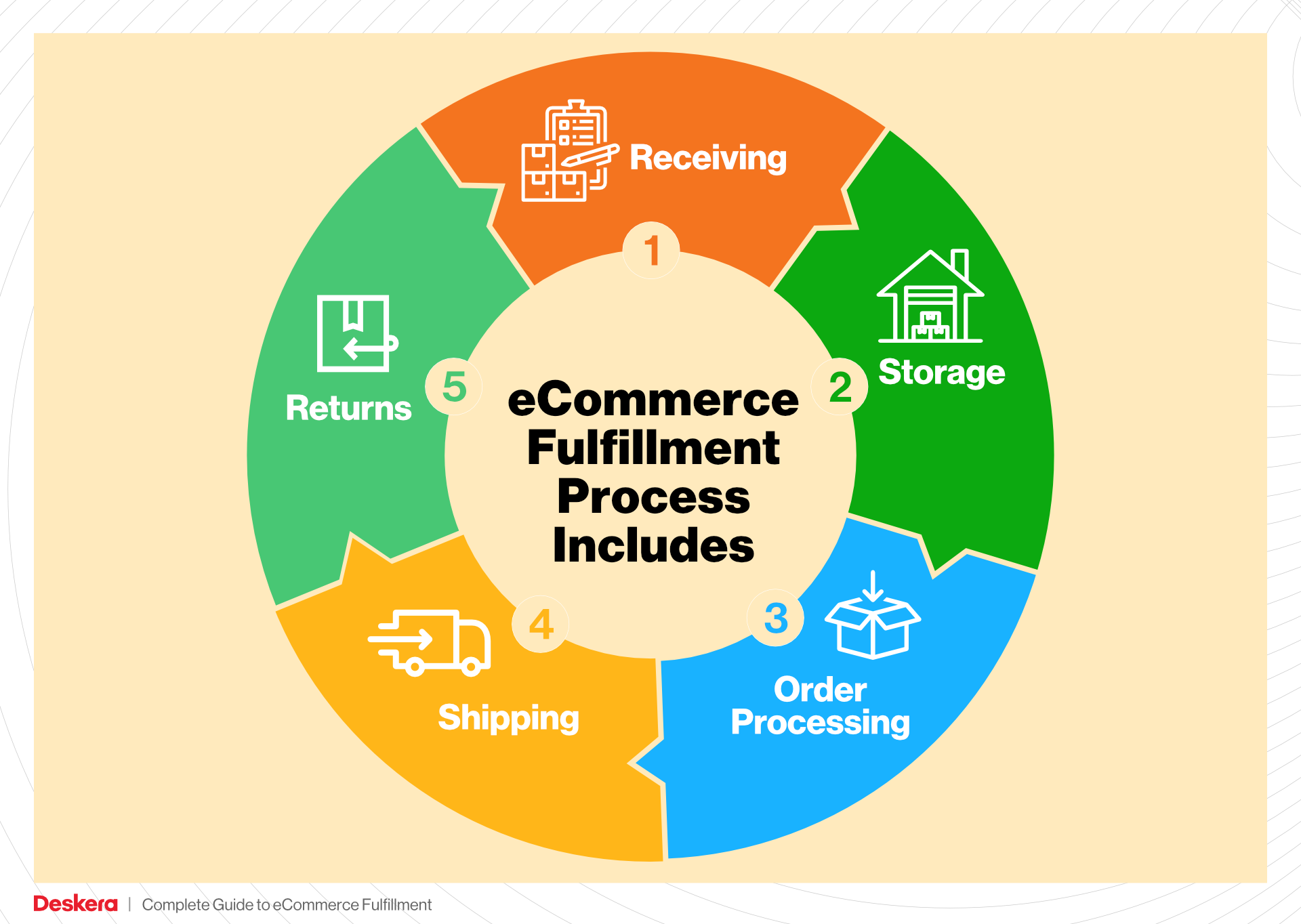
Key Term: FIFO (First In, First Out) – This inventory management method ensures that the oldest stock is sold first, reducing the risk of obsolescence and spoilage, particularly for perishable goods.
3. Order Picking
When a customer places an order, the next step is order picking. This involves selecting the items from their storage locations based on the details provided in the order. Fulfillment centers often use pick lists, which are generated automatically from the order management system, to guide staff in gathering the correct items.
Importance: Efficient order picking is essential for meeting customer expectations regarding delivery speed and accuracy. The quicker and more accurate the picking process, the higher the customer satisfaction and retention rates.
Key Term: Pick Lists – These documents or digital records indicate which items need to be retrieved for each order, including their locations in the warehouse. Utilizing pick lists streamlines the picking process, reducing errors and improving efficiency.
4. Order Packing
After picking, the next step is order packing, where the selected items are carefully packaged for shipment. This process involves choosing the right packaging materials to protect the products during transit and including any necessary documentation, such as invoices or return labels.
Importance: Proper packing is vital to prevent damage during shipping and to ensure that customers receive their orders in perfect condition. Additionally, well-packed orders can help minimize shipping costs by optimizing space in shipping containers.
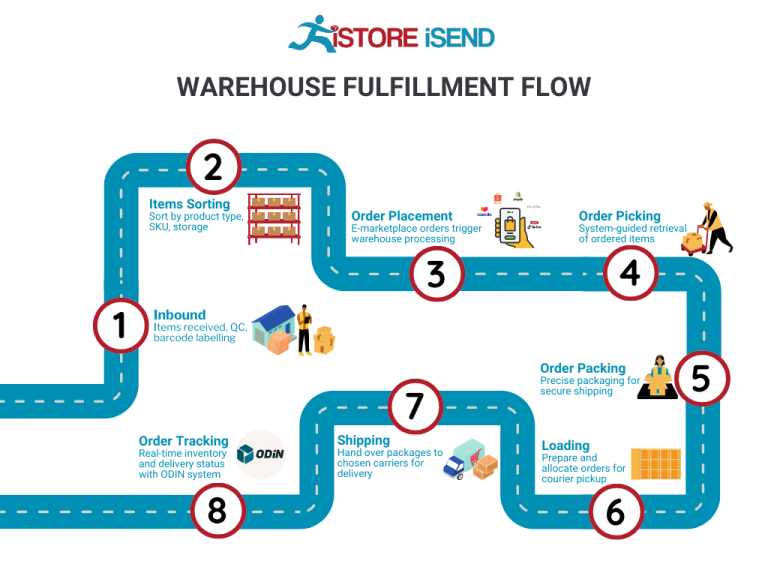
Key Term: Packing Slip – A document included in the package that lists the items contained within. It serves as a confirmation for the customer and aids in handling any potential returns.
5. Shipping & Delivery
The final step in the order fulfillment process is shipping and delivery. Once the orders are packed, they are labeled with shipping information and handed over to carriers for delivery. This stage may involve choosing the most cost-effective or fastest shipping options based on customer preferences and service agreements with logistics providers.
Importance: Timely shipping is crucial for customer satisfaction and can significantly impact a business’s reputation. Fast and reliable delivery options can differentiate a business in a competitive e-commerce landscape.
Key Term: Last Mile Delivery – This term refers to the final step of the delivery process, where the package is transported from a distribution hub to the end customer’s doorstep. Efficient last-mile delivery is essential for ensuring that customers receive their orders promptly and in good condition.
By understanding and optimizing each step of the order fulfillment process, e-commerce business owners and operations managers can enhance their logistics capabilities, improve customer satisfaction, and ultimately drive growth in their sales.
Comparing Fulfillment Models: In-House vs. 3PL vs. Dropshipping
Fulfillment Models Comparison
| Model | Who Handles Inventory | Best For (Business Stage) | Key Advantage | Key Disadvantage |
|---|---|---|---|---|
| In-House Fulfillment | The business itself | Startups to mid-sized businesses | Full control over inventory and processes | High overhead costs and resource-intensive |
| Third-Party Logistics (3PL) | Third-party provider | Growing businesses and scale-ups | Cost savings and scalability | Less control over the fulfillment process |
| Dropshipping | Supplier or manufacturer | Startups and niche businesses | Low startup costs and minimal inventory risk | Lower profit margins and reliance on suppliers |
In-House Fulfillment
In-house fulfillment refers to the process where a business manages all aspects of inventory storage, order processing, picking, packing, and shipping within its own facilities. This model is often favored by startups and mid-sized businesses that want to maintain complete control over their operations. The key advantage of in-house fulfillment is the ability to tailor the entire logistics process to the business’s specific needs and standards. Businesses can ensure quality control, manage customer experiences directly, and implement their own operational efficiencies. However, this model comes with significant disadvantages, primarily high overhead costs associated with warehousing, labor, technology, and equipment. As businesses scale, maintaining this model can become resource-intensive and may hinder growth if the operations cannot keep pace with increased demand.
Third-Party Logistics (3PL)
Third-party logistics (3PL) involves outsourcing fulfillment services to a specialized logistics provider. This model is particularly advantageous for businesses that are in a growth phase and require scalable solutions to handle increasing order volumes. A 3PL can manage inventory storage, order processing, and shipping, allowing businesses to focus on core activities such as marketing and product development. Key benefits of using a 3PL include cost savings through reduced overhead, access to advanced logistics technology, and the ability to leverage the provider’s expertise in managing complex supply chains. However, the downside is that businesses relinquish some control over their fulfillment processes. This can lead to potential issues with service quality or responsiveness if the 3PL does not meet the business’s standards or align with its operational goals. Effective communication and a strong partnership with the 3PL are crucial to mitigating these risks.
Dropshipping
Dropshipping is a fulfillment model where the retailer does not keep the products it sells in stock. Instead, when a retailer sells a product, it purchases the item from a third-party supplier, who then ships it directly to the customer. This model is especially appealing for startups and niche businesses with limited capital, as it requires minimal upfront investment and eliminates the need for inventory management. The key advantage of dropshipping is the low barrier to entry; retailers can offer a wide range of products without the risks associated with unsold inventory. However, dropshipping also has significant drawbacks, including lower profit margins due to reliance on suppliers for pricing and fulfillment, as well as potential delays in shipping and quality control issues that can negatively impact customer satisfaction. Additionally, businesses are often dependent on the reliability and performance of their suppliers, which can lead to challenges in maintaining consistent service levels.
In summary, choosing the right fulfillment model depends on the unique needs, resources, and growth stage of the business. Each model has its strengths and weaknesses, and understanding these can help e-commerce business owners make informed decisions that align with their operational goals and customer expectations.
A Deep Dive into Amazon FBA: Pros, Cons, and Who It’s For
Understanding Fulfillment by Amazon (FBA)
Fulfillment by Amazon (FBA) is a service offered by Amazon that allows sellers to store their products in Amazon’s fulfillment centers. Amazon takes care of storage, packaging, shipping, and even customer service on behalf of the sellers. This service is designed to simplify the logistics of selling on Amazon, allowing sellers to focus on growing their businesses while Amazon handles the intricacies of order fulfillment.
How FBA Works
-
Product Preparation: Sellers send their inventory to Amazon’s fulfillment centers. Each product must be properly labeled and packaged according to Amazon’s guidelines to ensure compliance and efficiency in handling.
-
Storage: Once the products arrive at the fulfillment center, they are stored until an order is placed. Amazon utilizes advanced inventory management systems to optimize storage and ensure products are available for quick shipping.
-
Order Processing: When a customer places an order, Amazon’s system automatically processes it. The fulfillment center picks the product, packs it, and ships it directly to the customer. This process is designed to be rapid, often resulting in same-day or next-day delivery.
-
Customer Service and Returns: Amazon also manages customer service inquiries related to FBA orders, including handling returns and refunds. This alleviates the burden from sellers, allowing them to focus on product development and marketing.
-
Integration with Seller Central: Sellers can manage their inventory, track sales, and analyze performance through Amazon Seller Central. This platform provides a comprehensive overview of inventory levels, sales metrics, and customer feedback.
Pros of FBA
-
Prime Eligibility: Products fulfilled through FBA are eligible for Amazon Prime, which can significantly increase visibility and sales. Prime members tend to prefer items that offer fast shipping, leading to higher conversion rates.
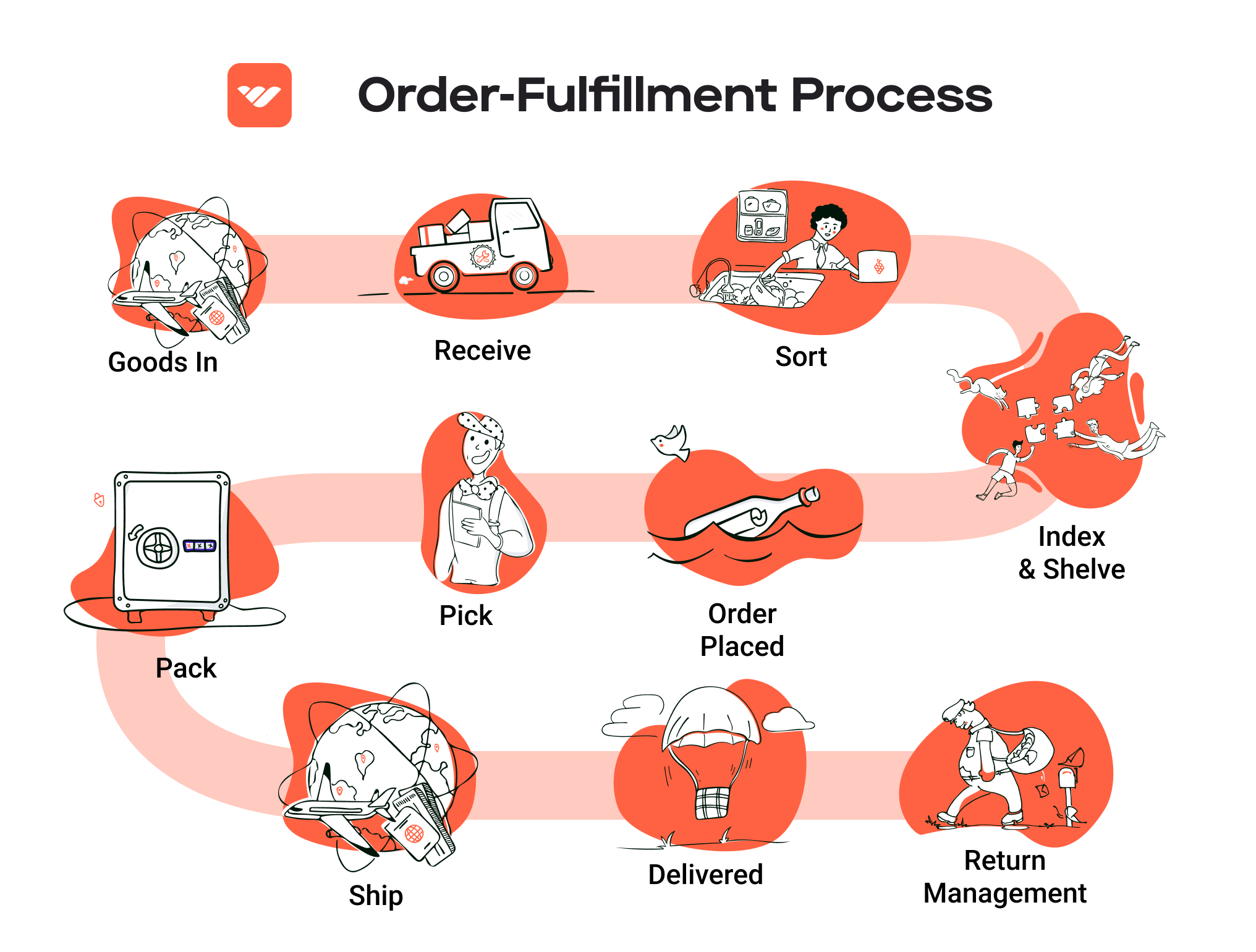
-
Customer Trust: Amazon is synonymous with reliability. By using FBA, sellers leverage Amazon’s trusted brand and customer service reputation, which can lead to increased customer confidence and loyalty.
-
Multi-Channel Fulfillment: FBA is not limited to Amazon’s marketplace. Sellers can use FBA to fulfill orders from their own websites or other sales channels, allowing for a streamlined logistics process across multiple platforms.
-
Simplified Logistics: FBA removes the need for sellers to manage storage, packing, and shipping logistics, freeing them to focus on other areas of their business such as marketing and product development.
-
Scalability: As sellers grow, FBA allows them to scale their operations without the need to invest in additional warehousing or fulfillment capabilities. Amazon handles the logistics, enabling sellers to expand their product offerings and reach.
Cons of FBA
-
High Fees: While FBA provides many advantages, it comes at a cost. Sellers must pay various fees, including storage fees for inventory and fulfillment fees for each item sold. These costs can significantly impact profit margins, especially for lower-priced items.
-
Strict Inventory Rules: Amazon has specific guidelines regarding inventory management. Sellers must adhere to these rules to avoid penalties or restrictions. Non-compliance can lead to inventory being returned or destroyed, resulting in financial losses.
-
Commingling Risks: FBA products may be commingled with inventory from other sellers, which can create issues with product authenticity and quality control. If a customer receives a damaged or incorrect item, it can reflect poorly on the seller, even if the issue originated from another seller’s inventory.
-
Limited Control: By outsourcing fulfillment to Amazon, sellers relinquish some control over the shipping process, including packaging and branding. This can dilute brand identity and customer experience, particularly for sellers who prioritize unique packaging.
-
Inventory Management Complexity: Managing inventory levels can become complex, especially during peak seasons. Sellers must carefully monitor stock levels to avoid running out of inventory or incurring long-term storage fees for unsold items.
Who is FBA Best For?
Fulfillment by Amazon is best suited for e-commerce businesses that are looking to scale quickly and efficiently. Here are some specific scenarios where FBA can be particularly beneficial:
-
Startups and Small Businesses: New sellers who lack the resources to manage their own logistics can benefit from the streamlined process that FBA provides. This allows them to focus on product sourcing and marketing without the complexities of fulfillment.
-
Established Sellers: Businesses looking to expand their reach and take advantage of Amazon’s massive customer base can leverage FBA to increase sales. The ability to offer Prime shipping can be a game-changer for established sellers.
-
Sellers with High Sales Volume: If a seller has a high order volume, FBA can help manage the logistics of shipping and handling. The efficiency of Amazon’s fulfillment centers can accommodate rapid order processing and shipping.
-
Multi-Channel Sellers: Sellers who operate on multiple platforms can use FBA for a unified fulfillment solution. This simplifies logistics and allows them to maintain a consistent customer experience across channels.
-
Brands Focused on Growth: Companies aiming for rapid growth can take advantage of FBA’s scalability. As demand increases, FBA can handle increased order volumes without requiring significant investment in infrastructure.
In conclusion, while Fulfillment by Amazon offers many benefits, it is essential for sellers to carefully weigh these against the potential downsides. Understanding how FBA fits into your overall business strategy is crucial for making informed decisions that align with your growth objectives.
Core Services Offered by Fulfillment Centers
Inventory Management & Warehousing
Inventory management and warehousing are foundational services provided by fulfillment centers that streamline the logistics process for e-commerce businesses. This service involves the systematic tracking of inventory levels, orders, sales, and deliveries. Fulfillment centers utilize sophisticated warehouse management systems (WMS) to ensure that stock levels are accurate, helping to prevent stockouts or overstock situations.
The benefits of effective inventory management include enhanced visibility and control over stock, which allows businesses to make informed decisions about reordering and product launches. For e-commerce businesses, this means improved cash flow management and reduced holding costs. Moreover, strategically located warehouses enable quicker shipping times, which is crucial for maintaining customer satisfaction in today’s fast-paced marketplace.
Pick and Pack Services
Pick and pack services are a critical component of the fulfillment process. This service entails the picking of products from the warehouse shelves and packing them for shipment to customers. Fulfillment centers employ trained staff and automated systems to efficiently handle this process, ensuring that orders are accurately filled and packaged according to specific requirements.
The primary benefit of pick and pack services is the reduction of order processing times, which translates to faster delivery for customers. In an era where consumers expect rapid shipping, having a reliable pick and pack operation can significantly enhance an e-commerce business’s reputation. Additionally, fulfillment centers often provide customized packing options, such as branded packaging, which can help strengthen a brand’s identity and improve the customer experience.
Kitting and Assembly
Kitting and assembly services involve grouping individual items together to create a single product or kit, which can be particularly advantageous for e-commerce businesses that offer subscription boxes or promotional bundles. This service can include assembling products, adding labels, or packaging items in a way that makes them ready for sale.
The benefit of kitting and assembly lies in its ability to streamline the order fulfillment process. By preparing kits in advance, businesses can reduce the time it takes to ship individual orders, thus enhancing operational efficiency. This is especially valuable during peak seasons or promotional events when order volumes can spike unexpectedly. Furthermore, offering unique product bundles can attract customers and increase average order values, driving higher sales for the business.
Returns Management (Reverse Logistics)
Returns management, also known as reverse logistics, is a vital service offered by fulfillment centers that deals with the processing of returned merchandise. This includes receiving returned items, inspecting them, restocking, or disposing of them according to the business’s policies. Effective returns management is essential in today’s e-commerce landscape, where easy returns are a significant factor in customer satisfaction.
The benefits of robust returns management are manifold. Firstly, it enhances customer trust and loyalty by providing a hassle-free return experience, which can encourage repeat purchases. Secondly, efficient returns processing minimizes the time and cost associated with handling returns, allowing businesses to recover value from returned items more quickly. Moreover, by analyzing return data, e-commerce businesses can gain insights into product quality and customer preferences, helping to refine their offerings and improve overall sales performance.
Conclusion
In summary, fulfillment centers provide a range of core services that are essential for the efficient operation of e-commerce businesses. From comprehensive inventory management and warehousing to specialized pick and pack services, kitting and assembly, and effective returns management, these services not only streamline logistics but also enhance customer satisfaction. By leveraging these fulfillment capabilities, e-commerce businesses can scale operations, reduce costs, and ultimately drive growth in an increasingly competitive market.
How to Choose a Fulfillment Partner: A 6-Point Checklist
Location & Warehouse Network
Importance:
The location of your fulfillment partner’s warehouses is crucial for ensuring timely deliveries and managing shipping costs. A strategically placed warehouse network can significantly reduce transit times, which is vital for customer satisfaction, especially in e-commerce.
Questions to Ask:
– Where are your fulfillment centers located, and how do those locations align with my target markets?
– What is your average shipping time to major regions, and how do you handle international shipping?
– Can you accommodate regional distribution needs, or do you have plans for expanding your network?
Technology & Integrations
Importance:
Efficient order processing and inventory management are essential for scaling your operations. A fulfillment partner with advanced technology can provide real-time tracking, automated order processing, and seamless integration with your existing e-commerce platforms.
Questions to Ask:
– What technology do you use for order management and inventory tracking? Can you provide a demo?
– How do you integrate with major e-commerce platforms (like Shopify, Amazon, etc.)?
– Do you offer API access for custom integrations, and what level of technical support do you provide?
Specializations (e.g., Cold Storage, Oversized Items)
Importance:
Not all fulfillment partners can handle specific product requirements. If you sell temperature-sensitive items or oversized goods, you’ll need a partner with the appropriate facilities and expertise.
Questions to Ask:
– Do you have specialized facilities for handling cold storage or oversized items?
– Can you provide examples of how you’ve successfully managed similar products for other clients?
– What safety measures and compliance protocols do you have in place for specialized storage?
Scalability & Capacity
Importance:
As your business grows, your fulfillment needs will change. Choosing a partner that can scale with you is essential to avoid disruptions in service and ensure that you can meet increased demand.
Questions to Ask:
– What is your current capacity, and how quickly can you scale up to meet my business growth?
– How do you handle seasonal spikes in order volume, and what contingency plans do you have in place?
– Can you support multi-channel fulfillment as I expand my sales platforms?
Pricing and Contracts
Importance:
Understanding the cost structure and contractual obligations is vital for maintaining your profit margins. Hidden fees can quickly erode your earnings, so a clear pricing model is necessary.
Questions to Ask:
– What are your pricing models (e.g., per order, monthly fees, storage fees), and are there any additional costs I should be aware of?
– Can you provide a detailed breakdown of all potential fees?
– What is the length of the contract, and what are the terms for termination or scaling down services?
Customer Support & Reviews
Importance:
Excellent customer support can make or break your fulfillment experience. A responsive partner can help resolve issues quickly, minimizing disruptions to your business.
Questions to Ask:
– What customer support channels do you offer (phone, email, chat), and what are your response times?
– Can you provide references or case studies from current or past clients that showcase your support capabilities?
– How do you handle service failures, and what measures are in place to prevent them?
Conclusion
Choosing the right fulfillment partner is a critical decision that can significantly impact your e-commerce operations. By considering these six key areas—Location & Warehouse Network, Technology & Integrations, Specializations, Scalability & Capacity, Pricing and Contracts, and Customer Support & Reviews—you can make a more informed choice that aligns with your business goals. Always remember to conduct thorough due diligence and ask detailed questions to ensure your fulfillment partner can meet your unique needs and help you scale effectively.
Understanding Fulfillment Pricing: A Breakdown of Common Fees
Initial Setup Fees
When engaging with a fulfillment service, the initial setup fee is often the first cost you encounter. This fee covers the onboarding process, which includes account creation, system integration, and initial inventory setup. The amount can vary significantly based on the complexity of your operation and the fulfillment provider’s capabilities. Generally, providers charge a one-time fee that can range from a few hundred to several thousand dollars.
It’s important to ask what is included in this fee. Some providers may offer additional services such as training, software integration, and initial consulting as part of their onboarding process. Ensure that you understand the scope of the setup to avoid unexpected costs down the line.
Receiving Fees
Receiving fees are incurred when your inventory arrives at the fulfillment center. These fees cover the labor costs associated with unloading, inspecting, and entering your products into the inventory management system. Typically, receiving fees are charged per pallet or per hour of labor used during the receiving process.
The exact cost can vary depending on the fulfillment center’s location, the volume of inventory being received, and the complexity of the products (e.g., need for special handling). To minimize these fees, consider scheduling bulk shipments and ensuring that your products are packed efficiently for transport.
Storage Fees (per pallet/bin)
Storage fees are charged for keeping your inventory in the fulfillment center. These fees can be calculated on a per-pallet or per-bin basis and are typically billed monthly. The rates can vary based on factors such as the region, size of the items, and the total volume of inventory stored.
Many fulfillment providers also implement tiered pricing for storage fees, offering lower rates for larger volumes of inventory. Additionally, consider asking about long-term storage fees, which may apply if your products remain in the warehouse for an extended period, often over six months. Understanding these fees can help you manage your inventory turnover and avoid unnecessary costs.
Pick & Pack Fees (per item/order)
Pick and pack fees are charged for the labor involved in selecting items from inventory and packaging them for shipment. This fee can be structured in various ways: per item picked, per order processed, or a combination of both. The complexity of your products can also influence these fees; for example, items requiring special packaging or kitting may incur higher costs.
To get the best pricing, consider the volume of orders you expect to process. Many fulfillment centers offer discounts for high-volume orders, so it may be beneficial to negotiate based on your sales projections. Additionally, ensure that you communicate any specific packaging requirements upfront to avoid additional charges later.
Shipping Fees
Shipping fees encompass the costs associated with transporting orders to customers. These fees can vary widely based on factors such as the shipping method chosen (standard, expedited, or international), the weight and dimensions of the package, and the destination. Fulfillment providers often have partnerships with carriers, which can lead to discounted shipping rates that may be passed on to you.
When evaluating shipping fees, be sure to ask about the different options available, as well as any additional costs such as handling fees for special requests. Understanding the shipping landscape can help you choose the most cost-effective solutions while meeting your customers’ expectations for delivery speed.
Tips for Getting an Accurate Quote
-
Define Your Needs Clearly: Before reaching out for quotes, clearly outline your business requirements, including expected order volumes, inventory types, and any special handling needs.
-
Request Itemized Quotes: Ask for detailed, itemized quotes that break down all potential fees. This transparency will help you compare providers accurately.
-
Inquire About Hidden Fees: Ensure you ask about any additional fees that may not be included in the initial quote, such as long-term storage fees, returns processing fees, or peak season surcharges.
-
Negotiate Terms: Don’t hesitate to negotiate terms based on your expected order volumes. Many fulfillment centers are willing to offer discounts for high-volume commitments.
-
Evaluate Flexibility: Consider how flexible the fulfillment provider is regarding scaling your operations. As your business grows, you want a partner that can adapt to your changing needs without excessive costs.
By understanding these common fulfillment pricing models, you can make informed decisions that align with your business strategy, ultimately optimizing your logistics and enhancing your customer experience.
Frequently Asked Questions (FAQs) about Fulfillment
1. What is Amazon Fulfillment Center PGA1?
Amazon Fulfillment Center PGA1 is a specific logistics facility operated by Amazon, designed to store and manage inventory for sellers using Amazon’s fulfillment services. This center handles the picking, packing, and shipping of products to customers, ensuring compliance with Amazon’s standards for speed and efficiency.
2. How does order fulfillment work at Amazon Fulfillment Center PGA1?
Order fulfillment at PGA1 begins when a seller sends their inventory to the center. Once an order is placed on Amazon, the system automatically processes it, and staff at the fulfillment center pick the item from storage, pack it securely, and ship it directly to the customer, often within a day or two.
3. What’s the difference between a warehouse and a fulfillment center?
A warehouse primarily serves as a storage space for goods, while a fulfillment center is optimized for processing and shipping orders. Fulfillment centers have advanced technology and processes that allow for rapid order fulfillment, including packing and shipping, often with a focus on e-commerce needs.
4. What is a 3PL (Third-Party Logistics)?
A 3PL provider offers outsourced logistics services, which can include storage, order fulfillment, and shipping. Businesses partner with 3PLs like Amazon to leverage their infrastructure, expertise, and technology, allowing them to focus on core business activities while ensuring efficient distribution.
5. How much do fulfillment services cost?
The cost of fulfillment services can vary widely based on several factors, including order volume, storage space required, and the specific services provided. Typically, charges may include storage fees, pick and pack fees, shipping costs, and additional charges for value-added services like kitting or labeling. It’s advisable to request quotes from multiple providers to compare costs.
6. Can I use Amazon Fulfillment Center PGA1 for international shipping?
Yes, Amazon Fulfillment Center PGA1 supports international shipping options. Sellers can utilize Amazon’s global logistics network to reach customers in various countries, benefiting from local warehousing and optimized cross-border shipping solutions.
7. How does Amazon ensure compliance with its fulfillment standards?
Amazon has strict fulfillment standards that sellers and fulfillment centers must adhere to, including packaging, labeling, and shipping requirements. Regular audits and performance metrics help maintain compliance, ensuring that sellers meet customer expectations for speed and quality.
8. Can I manage returns through Amazon Fulfillment Center PGA1?
Yes, Amazon Fulfillment Center PGA1 can manage returns for sellers. The process includes receiving returned items, inspecting them, and either restocking or disposing of them as per the seller’s instructions, which simplifies return management and enhances customer satisfaction.
9. What technology is used in Amazon Fulfillment Center PGA1?
Amazon Fulfillment Center PGA1 employs advanced warehouse management systems (WMS), robotics, and data analytics to streamline the fulfillment process. These technologies improve inventory tracking, order accuracy, and operational efficiency, allowing for faster shipping times.
10. How can I transition from Fulfillment by Amazon (FBA) to a 3PL model?
Transitioning from FBA to a 3PL model involves several steps: assessing your current inventory and sales volume, selecting a suitable 3PL partner, and managing the transfer of inventory. A good 3PL provider can assist with integration, logistics planning, and maintaining seller performance metrics throughout the transition.
Conclusion: Is Outsourcing Fulfillment the Right Move for Your Business?
The Advantages of Outsourcing Fulfillment
Outsourcing fulfillment can be a transformative decision for e-commerce businesses looking to scale efficiently and effectively. One of the most compelling benefits is the significant time savings it provides. By delegating logistics, order processing, and inventory management to a specialized fulfillment partner, you free up valuable time to focus on core business activities such as marketing, product development, and customer engagement. This shift not only enhances productivity but also fosters innovation, allowing your business to adapt more swiftly to market demands.
Scalability is another crucial advantage of utilizing fulfillment services. As your business grows, your operational needs will evolve. A reputable fulfillment partner can seamlessly accommodate increased order volumes, seasonal fluctuations, and even international expansions without the need for substantial capital investment in infrastructure. This flexibility ensures that you can meet customer expectations for fast delivery while maintaining cost efficiency.
Moreover, leveraging the expertise of fulfillment specialists can lead to improved customer satisfaction. These partners possess a deep understanding of logistics, compliance requirements, and technology integration, which can significantly enhance your operational processes. Their experience in navigating the complexities of e-commerce fulfillment means you can reduce errors, optimize inventory turnover, and ultimately deliver a better experience to your customers.
Choosing the Right Partner for Growth
Selecting the right fulfillment partner is paramount to your growth strategy. A partner that aligns with your business values and understands your unique challenges can be a catalyst for success. Consider conducting a thorough audit of your current shipping processes to identify inefficiencies and gaps. This assessment will help you determine if outsourcing fulfillment is the strategic next step for your business.
Take action today: evaluate your operations and explore how a fulfillment service can not only streamline your logistics but also position your brand for sustainable growth in the competitive e-commerce landscape.
Important Disclaimer
⚠️ Important Disclaimer
The information in this guide is for educational purposes. Fulfillment services, pricing, and platform features change frequently. Always conduct your own due diligence and consult with providers directly before making business decisions.
